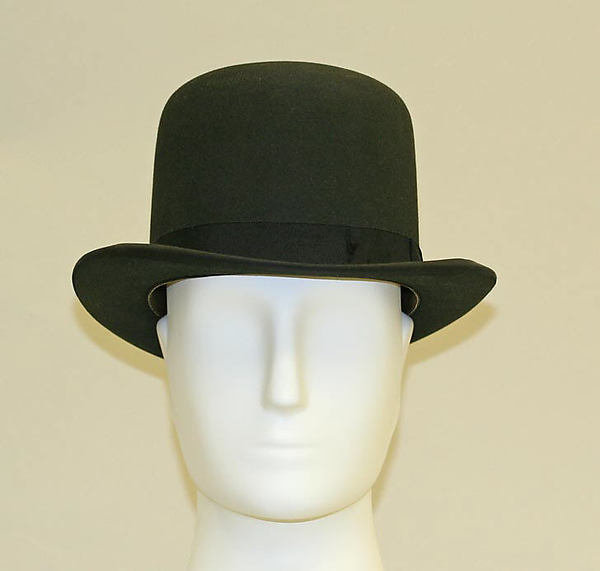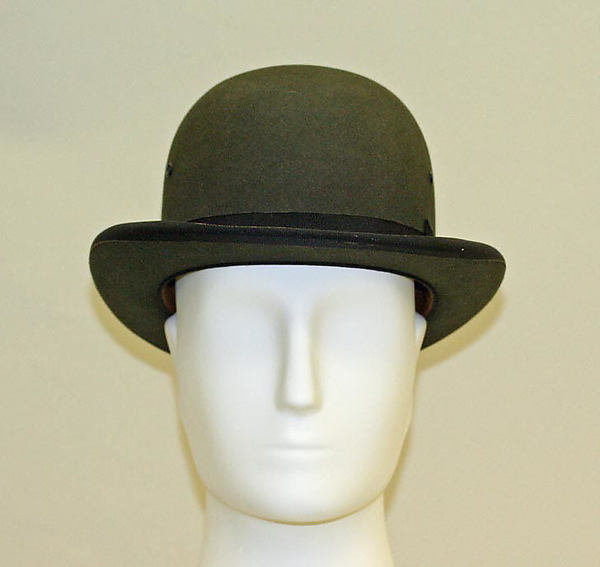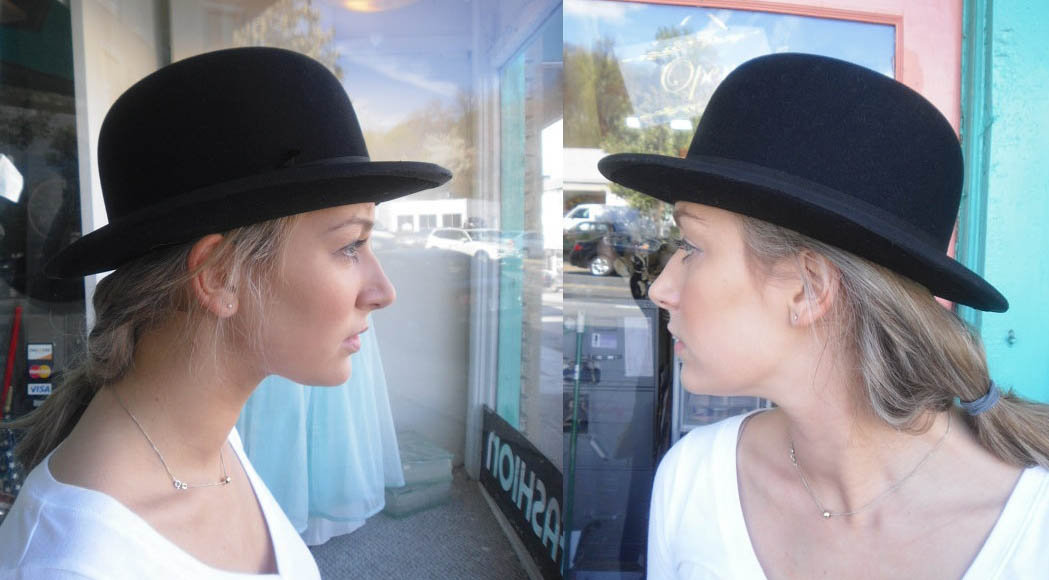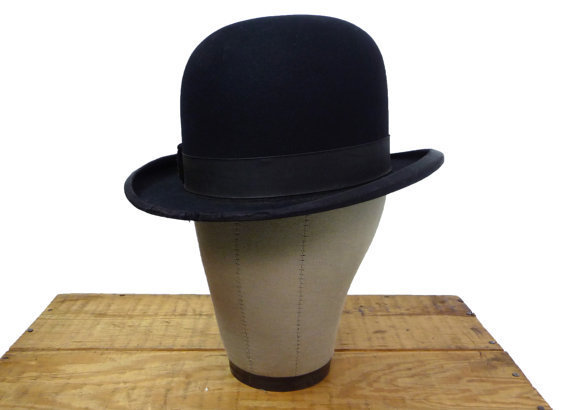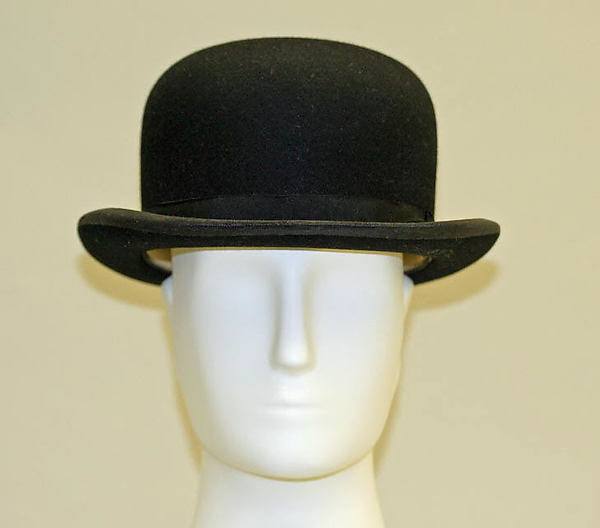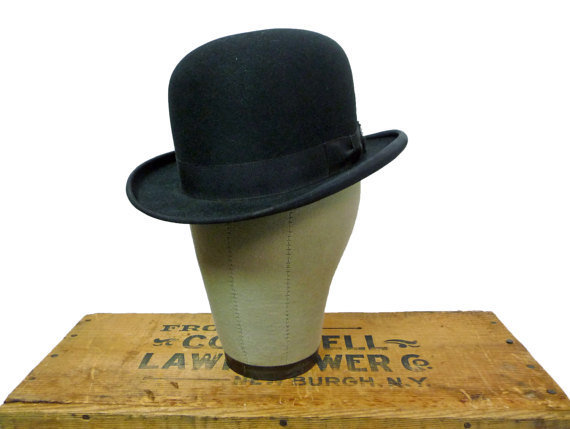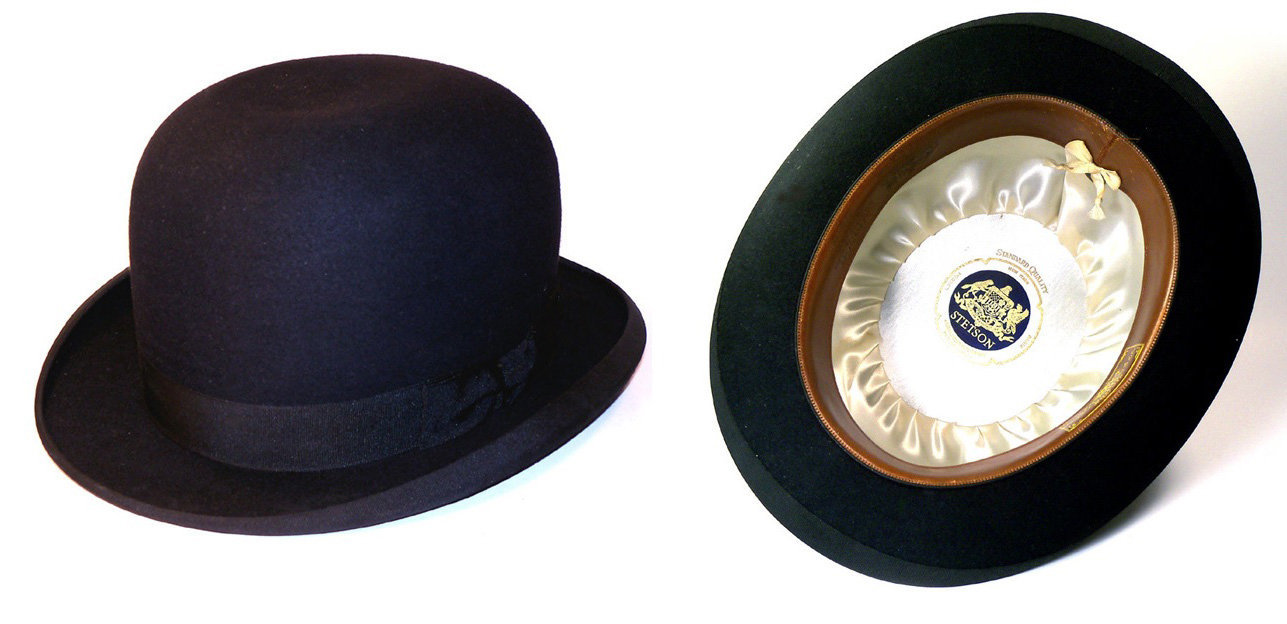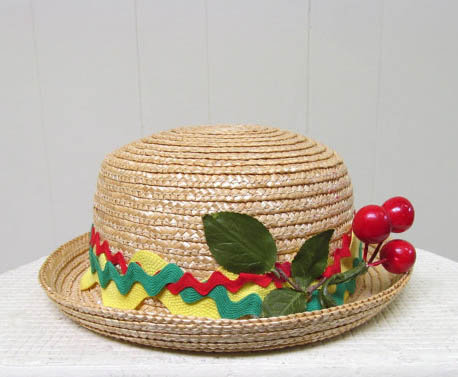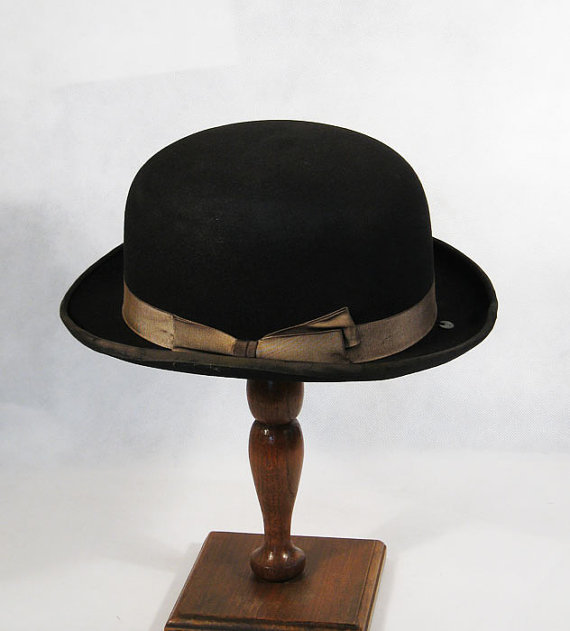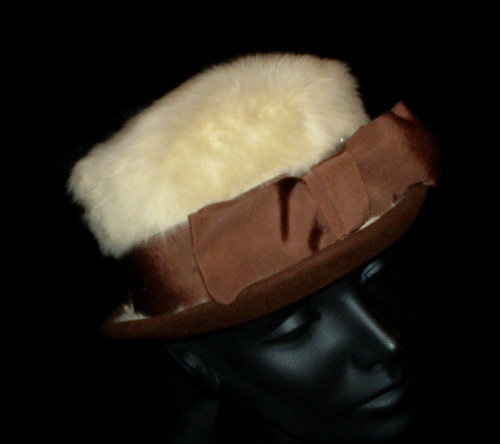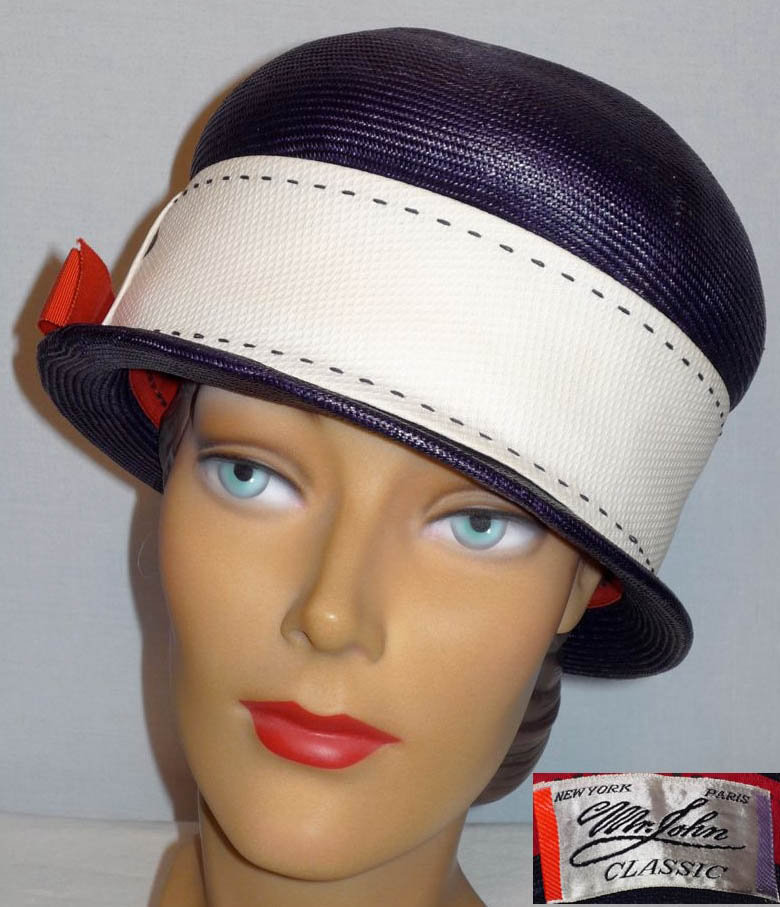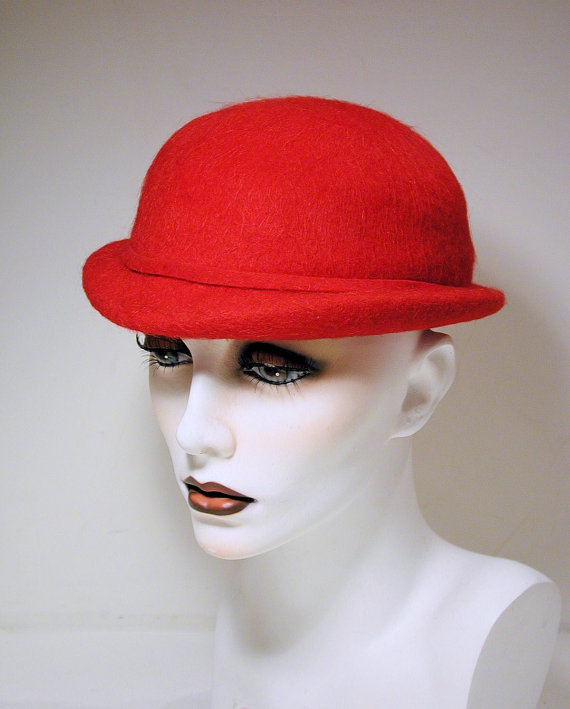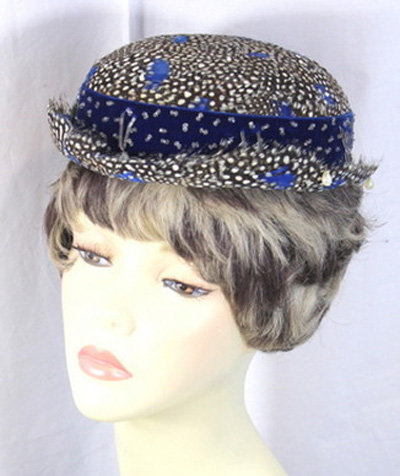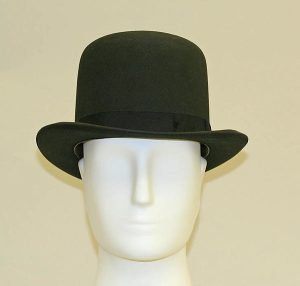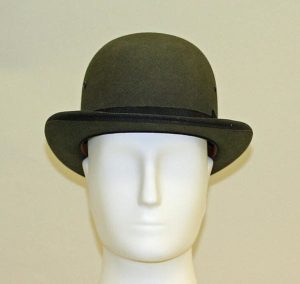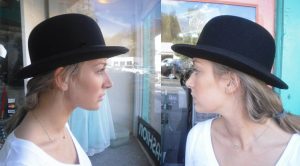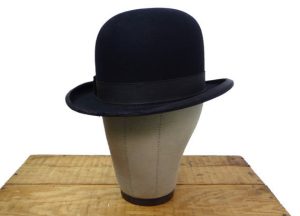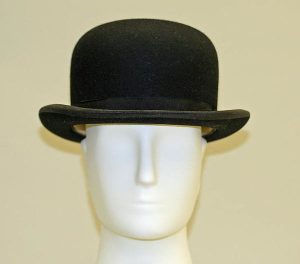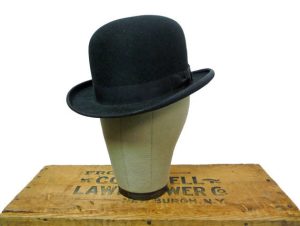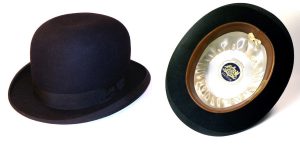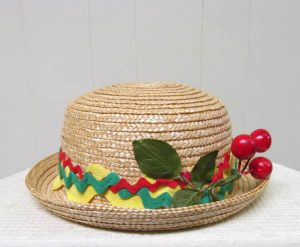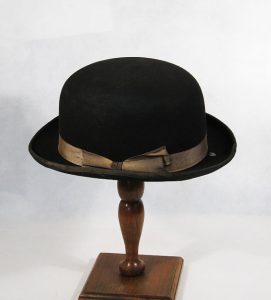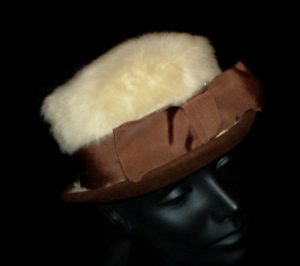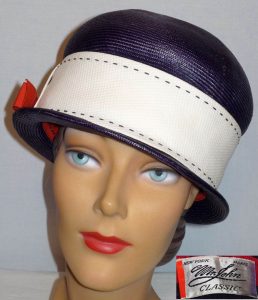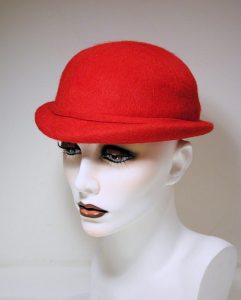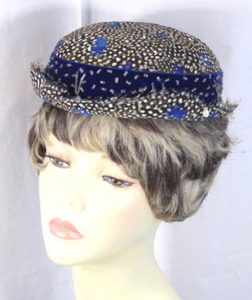The bowler or derby hat is generally made of a hard, dark felt – usually black or brown – but can also be made of stiff fur.
The basic style features a bowl-shaped crown and a short circular brim with a slight curl. While the color and materials vary little, there are variations to the shapes and styles of the bowler, including the young men’s lower-crowned derby, the ventilated ‘Dunlap,’ and the flat-topped derby which was a favorite of famed American financier J.P. Morgan and also of Winston Churchill.
This hat style was invented in 1849 in England as a bowler, but is often called a derby in the United States due to its association with equestrian pastimes and sporting events, particularly the Kentucky Derby. The bowler hat was in its fashion heyday in the early part of the 20th century, but lost popularity when a more casual ‘soft hat’ attitude crept into men’s fashions after World War I.
Over the years, there have been many famous bowler wearers – such Charlie Chaplin and Stan Laurel – and the hat is still worn today for many equestrian events.
Written by JauntyRooster
